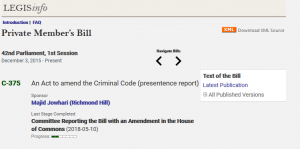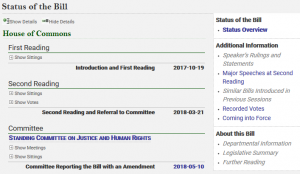First, let me say that I was thrilled to see a revamped Parliament of Kenya Website. The notable features I saw were that it is now easier to navigate the website and access information on both Houses. The You Tube Channels for both Houses are now embedded on the website. Another critical progress is that one can now upload a petition and submit it to Parliament. This is found under ‘Get Involved’ menu. I have also seen that under the ‘Get Involved’ menu, there is an attempt to incorporate the aspect of public participation. All these are commendable.
I know that this is a work in progress but allow me to make my three quick suggestions:
- Make the website friendly to PWDs
I have always held the belief that with available resources, Parliament should make its website accessible to persons with disabilities. For instance, a person with visual impairment should have no difficulty navigating through the various links. An audio should be provided so that such a person can easily move from one item on the website to the next. The Ugandan Parliament has attempted to have the +A and –A for increase or decrease of font size but it seemed not to function well. The Tanzanian Parliament website does not have this. The Kenyan Parliament website does not have both the audio navigation and the +A and –A. Burundi, nada. East Africa Legislative Assembly, nada. Sudan has done great. Theirs is in Arabic and English. This means that within the EAC, if you have visual impairment, you will have trouble accessing information on parliamentary websites. To be fair, though, most Parliaments websites are not friendly to PWDs, especially to those with visual impairment.
My quick suggestion therefore is that the Parliament of Kenya should grab this opportunity and blaze the trail by having its website friendly to PWDs.
- Not having either translation of the website content into Kiswahili or a Kiswahili segment is a lost opportunity
To make Parliament accessible to most Kenyans, the website should have a link that you can click on and you find the website content in Kiswahili. Alternatively, the website could be further segmented into two: English and Kiswahili. Canada’s Parliament has done this with French and English. Tanzania has done this with English and Kiswahili. Burundi has made an attempt too. Rwanda has done it too with French and Kinyarwanda and English. The Grand National Assembly of Turkey too. Why not us?
Below is a screenshot of Parliament of Tanzania’s website in Kiswahili:

- Towards an integrated information
I have no idea what it takes to have integrated information on a website. For instance, if one is to click on a Bill, it is user friendly to be able to stay on that page and still get information on the sponsor of the Bill, what is captured in the Hansard on the Bill, the status of the Bill, any report on the Bill, whether it is at the Senate and at what stage and so on. New Zealand Parliament has done this. Canada’s Parliament too. Australia too. Just to name a few. In the Parliament of Australia, you can also track a Bill real-time.
Below is a screenshot of Canada’s Parliament’s website on a particular Bill:


Conclusion
A website means a lot to any brand, particularly if it is an institution. The changes proposed and others hold inherent potential to a greater Parliament of Kenya. Let us seize this moment.
You can listen to an audio recording of this post below:
–
ayes & nays
–

One Reply to “Three Suggestions for the Parliament of Kenya Website”
Comments are closed.